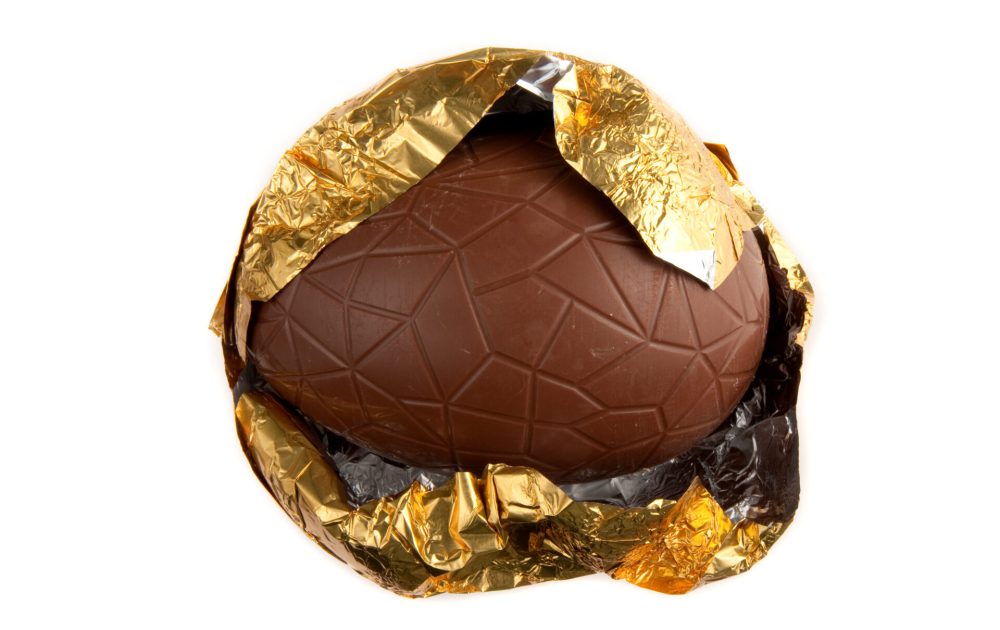Our test tells you which everyday chemicals you've recently come into contact with, and easy steps you can follow to reduce your exposure to them.
Easter egg chocolate choices

Easter weekend is almost here, and it feels like Spring at last. Eggs at Easter time have symbolised new life and rebirth in some faith traditions for centuries, meaning that chocolate eggs are abundant at this time of year. For many it’s a time to enjoy a seasonal treat of an Easter egg, and it’s worth taking a closer look at the ingredients and how they’re packaged before choosing – is to possible to enjoy them a little more healthily?
The benefits of chocolate
Organic cocoa, the main ingredient of chocolate, is grown without the use of pesticides, leaving the cocoa beans free of any chemical residues. The same applies to organically grown sugar and milk produced by organic farms; an Easter egg that is truly organic will be produced without any ingredients exposed to pesticides. Some eggs also have flavourings or filling, so it’s also worth checking if natural or artificial flavours have been used.
Chocolate is thought to have some neurological benefits, especially dark chocolate, because it contains tryptophan, an essential amino acid. After absorbing tryptophan from food, our body converts it to 5-HTP (5-hyrdoxytryptophan), then to mood-boosting serotonin, before finally converting it to melatonin which plays a key role in your natural sleep-wake cycle.
Dark chocolate is also a source of flavonoids which may benefit cognitive brain function by influencing signalling pathways, which could help improve memory. It’s also a rich supply of antioxidants and has lower levels of sugar, which is why some people believe dark chocolate is the “healthier” choice.
But that’s not the whole story.
The dark side of dark chocolate
A link has been made between dark chocolate and heavy metals, specifically cadmium and lead. Consumer Reports measured the levels of heavy metals in 28 dark chocolate bars and detected cadmium and lead in all of them, with a concerning level found in 23 of the bars. Long-term exposure to low levels of either of these heavy metals has been linked to various health effects, particularly when consumed during pregnancy and childhood, so if you think you may be at risk, consume in moderation or swap to a milk chocolate made using organic milk and sugar.
Easter egg packaging
Many types of food packaging contain phthalates which are a group of chemicals used to make plastics more durable. Phthalates can transfer from packaging into food, and once ingested they could pose several health risks. Easter eggs are also usually wrapped in foil, which could increase your exposure to aluminium by a small amount.
Choose plain brown paper or card packaging with no inks or dyes to help you avoid any chemicals lurking in packaging.
Ideas for Easter without the cocoa
Easter isn’t just about chocolate though – for many it’s the first time to gather with friends and family and enjoy the longer days. Activities such as decorating your own Easter eggs are easy and fun to do – all you need is a box of organic eggs and some paints or pens, free of toxins, which most children’s brands offer.
Baking is also something to bring people together, and using organic ingredients – you could make a delicious Easter cake. If you’re not a baker, perhaps treat yourself to an organic cake made to order. If you like to be outside give a themed scavenger hunt a try – the Woodland Trust have a nature-themed list of items for children to find, plus other fun Easter activities to take part in here.
Happy Easter.
More information
Lasting Health is developing a test to help individuals identify their levels of everyday chemicals and endocrine disrupting chemicals. Sign up to find out more.
Go Organic UK guidance on organic product packaging.